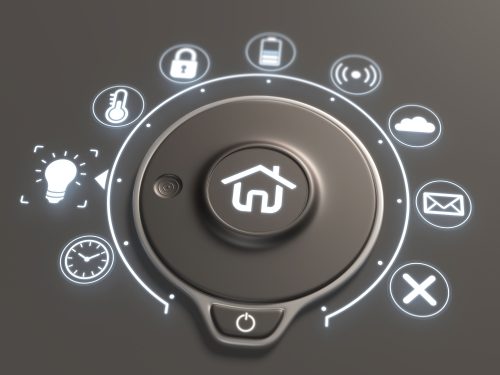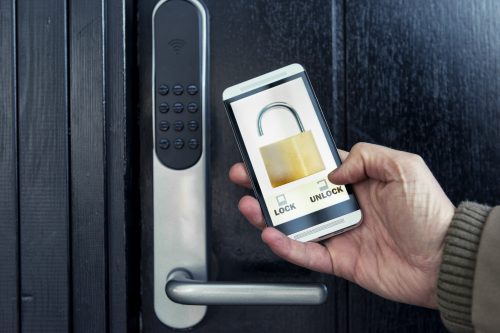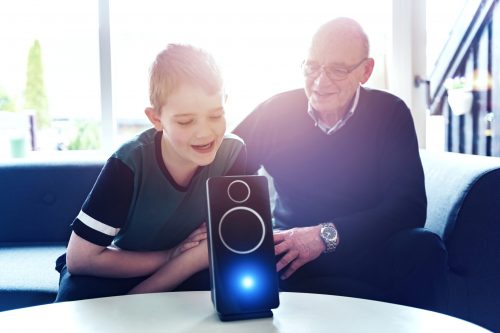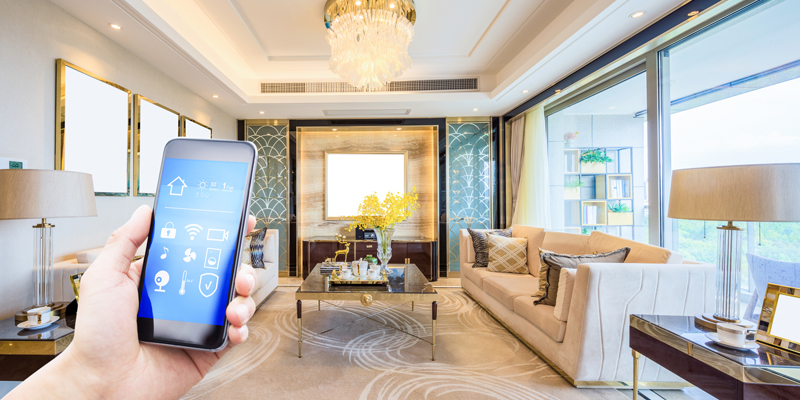THE CONNECTED HOME IS HERE – ARE YOU READY?
"The vision of the connected home is finally beginning to come together."
"Many consumers still do not understand connected device value propositions and early adopters face significant pain points that have yet to be addressed."
"Connected devices are disrupting every nook of the home."
"Despite the proliferation of devices, we're still far from the vision of seamlessly connected homes."
"Nearly half of the individuals in the connected home market also own a wearable."
This connected home food-for-thought comes from a recent McKinsey report titled, There’s No Place Like A Connected Home. In its 2017 report McKinsey surveyed over 3,000 homeowners asking them about their perspectives on connected and smart homes.
While those of us involved in cutting-edge technology and in envisioning the future are deeply immersed in connected homes, the reality is that the technology is still not quite ready for mass adoption and use. We know the technology is here and that connected devices are a rapidly growing market. While some connected home devices have a well proved value proposition (like thermostats for instance) others are still struggling to find the reason someone would purchase and install the connected product in their home (think Juicero, the infamous connected juicer).
The majority of homeowners select connected devices based on the problem the device will solve for them. This makes the one-time purchase of a connected thermostat or smart lock very appealing – small learning curve, easy installation, simple configuration, and zero maintenance. The reward is immediate, leading homeowners to purchase more connected devices. This is where the lack of a coherent ecosystem that is easy to use and install comes in: without this, creating an entire connected home is frustrating and out of many consumer’s reach. After installing multiple stand-alone devices and their related sea of apps, the value proposition grows weaker.
Let’s talk about the first barrier: creating connected home products that provide a value to consumers that offset the cost and complexity of connecting it. There are some great product categories that have figured this out. By looking at the products that have provided value, we can understand how new product categories might as well.
Home Security & Safety
It’s no surprise that home security is one of the largest growing domains in connected homes. Everyone has a desire to feel safe and secure in their own home. Our home is where we’re able to relax, be ourselves, and simply just be. Knowing that our home is secure when we’re sleeping, at the office, working out in the basement, or traveling is integral to our peace-of-mind.
From do-it-yourself home security systems to discreet cameras to smart doorbells, home security is a rapidly growing segment in connected homes.
In addition to home security, the idea of safeguarding our home, even when we can’t be there, is one that resonates with many consumers. Our home is typically our biggest investment, and many have a little worry that something will go wrong when we can’t be home, especially for longer periods of time like a vacation. Connected technology that monitors and informs us about carbon dioxide levels, water leaks, or fire, eases that little worry that things are ok. Carry this one step further to the problems many homeowners suffer after a natural disaster – leaking pipes, fires, etc. – smart detectors can ease worry and benefit everyone from homeowners to insurance companies to first responders.
Voice Controls
Speak up and speak clearly and presto, your front door is unlocked or your pressure cooker automatically turns on. Yes, voice control is here and it’s changing the way we’re living and talking in our homes. For early adopters, voice controls are the epitome of cool – giving them the latest in connected home technology. For seniors or people living with disabilities, voice controls give them both freedom and security.
If there is one domain in which we’re excited to see what happens next, it’s with voice controls. Admittedly, voice assistants and control are nothing new, it’s only now that we’re realizing the power of “Open Sesame!”.
More and more technology companies are looking for ways to take advantage of the voice control powered by Google and Amazon. We’re seeing software and apps that power voice-controlled speakers, refrigerators that can send a voice-dictated grocery list to the grocery store (virtual or real), front door locks and garage doors that open on voice command, and light switches that respond to voice commands are just a few real-world examples.
The opportunities for voice control and better, safer, smarter connected homes is unprecedented. Imagine setting controls on your stove that make it impossible for your child to turn on the stove or to enable child-safety locks on your drawers and the door to the basement steps or to dispense food to your cat when you’re out-of-town overnight.
Top Trends in Connected Homes
Now, obviously we only touched on three of the most established types of smart and connected home technology – it would take a very long blog post to highlight all the areas in which we see opportunity. To keep you thinking and innovating, here are some of the latest connected home trends we saw at CES:
- Samsung Family Hub fridge. This fridge functions as the smart home hub, enabling you to take advantage of Samsung’s SmartThings ecosystem.
- Kohler Konnect. Includes a voice-controlled shower that remembers your temperature/pressure presets, a toilet that has foot warmers, a bath that fills itself, a mirror that is also an Alexa speaker, and more.
- Homey smart home hub. This is the hub people are waiting for – control it with Google Assistant, Alexa, and Facebook and bring over 20,000 unique smart home devices together into one interface.
The common thread between these three applications: easier, safer, and more secure living. Know that the temperature in the tub won’t be too hot for your child or that your elderly parents can easily control their lights and door lock with one hub – this is the magic in connected home technology.
Connected Home Barriers
McKinsey highlighted key industry pain points that must be conquered in order for connected homes to become adopted by the mass market. Understanding these pain points and finding ways for connected technology and product features to solve them is how new and innovative products will become the next market successes:
- Hardware manufacturers/consumer electronics. Need to create distinctive features to increase margins. Building brand loyalty in an immature market.
- Telecom/cable providers. Connected homes are in direct competition with existing high margin products.
- Retailers. Equipping the sales force with deep knowledge of connected homes. Ability to easily explain connected home benefits.
- Software/ecosystem players. Monetization of data collection in the ecosystem. Where to best get invested in connected home technology.
- Service providers. Utility and home security companies need to learn how to capitalize on connected home technology. Educating the sales team on connected home technology devices and benefits.
Contact us and we’ll discuss how to solve the barriers that are preventing consumers from benefitting from your connected home technology. This is the Radius effect in action. Innovation. Realized. Together we can make all homes safer, more secure, more comfortable for us, and ease our worries.
RELATED CONTENT
RELATED EXPERTISE
RELATED INSIGHTS
RELATED PROJECT WORK
RELATED CAPABILITIES
WANT TO LEARN MORE?
Start a conversation with Radius to learn how we can help you take your Healthcare project to the next level.




